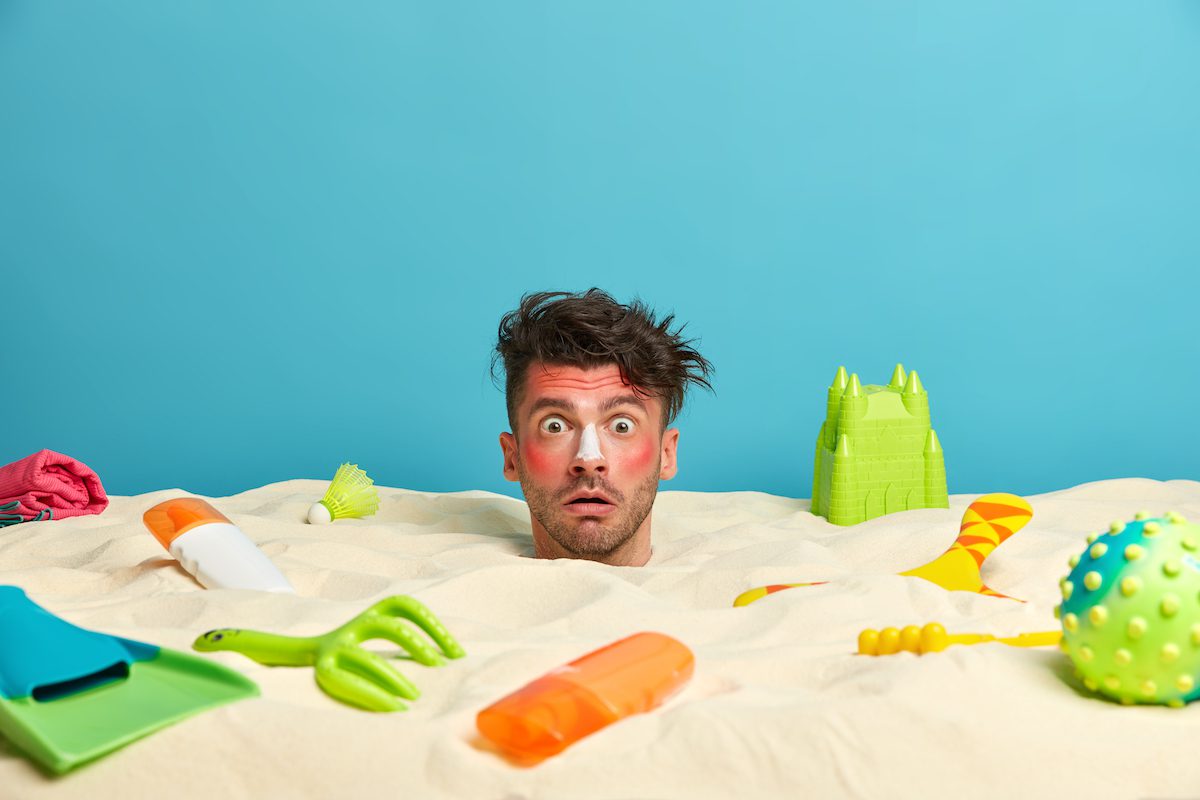How to Treat Sunburn
Every year, scores of Australians flock to the outdoors, eager to catch a spell of the balmy summer weather. But what might be a pleasant dose of sun in one moment can easily turn into an unpleasant sunburn in the next. More than just causing short-term pain and redness, sunburns can cause long-term damage to the skin. This is why it’s so important to protect your skin from the sun’s powerful rays. But if you have already been exposed, knowing how to treat a sunburn is equally important.
What is a sunburn?
Sunburn is a form of skin damage caused by overexposure to the sun’s ultraviolet (UV) rays. Sunburns can range from mild to severe, with symptoms appearing in as little as 11 minutes. In addition to causing short-term skin irritation, too much sun exposure can lead to an increased risk of skin cancer and premature wrinkling.
Sunburn Symptoms
Mild sunburn symptoms may include redness, itching, and pain in the affected area. Severe sunburn can cause blistering, swelling, peeling of the skin and severe pain. Skin may also become tender and hot to the touch.
It’s common for redness to begin to appear within 2 to 3 hours, with the sunburn continuing to develop over the following 1 to 3 days.
How long does a sunburn last?
The amount of time it takes before a sunburn heals depends on the severity of sun exposure, age and skin type of the person affected. For example, fair and light skin individuals are generally more susceptible to sunburn, and young skin typically heals faster. Mild sunburns generally heal within 3 to 5 days, while more severe sunburns may take up to a couple of weeks to fully heal.
What is the best home remedy for sunburn?
Though there is no instant remedy for sunburn, there are steps you can take to ease your discomfort as your body naturally heals itself.
- As soon as you notice any signs of sunburn, retreat from the sun immediately and begin the following treatment.
- Start by cooling the sunburned skin by taking a cool bath or shower, or by applying cold compresses such as the AeroCool Ice Pack or Instant Cooling Spray on the affected areas.
- Stay hydrated by drinking plenty of fluids, such as water or electrolyte sports drinks to prevent dehydration.
- Apply a moisturising lotion to the affected area (when it is damp) to help soothe the skin and reduce redness. The AeroBurn range of burn gels provide a two way action for soothing relief that contains natural remedies such as aloe vera and tea tree oil. While providing a soothing effect, the AeroBurn range prepares the skin for faster healing.
- Do not pop blisters. If a blister does break naturally, it is important to clean the area with mild soap and water. Remove dead skin carefully followed by applying with a pair of small, clean scissors, applying AeroAid Antiseptic ointment and an AeroWound Dressing to prevent infection.
- Speak to your pharmacist about taking over-the-counter anti-inflammatory medication to help reduce swelling and discomfort.
- Allow your skin to repair itself. This means avoiding further exposure to the sun until the burn has healed.
Treat Sunburn with AERO Healthcare
Aero Healthcare’s line of burn products offer an effective way of managing the symptoms of mild sunburns. From AEROBURN Burn Gel and AEROBURN Burn Spray to the AEROAID Antiseptic Cream, our range of over-the-counter sunburn products provide a soothing effect for the skin that helps reduce discomfort caused by sunburns. Natural ingredients that are designed to provide fast acting relief that are easy to apply and are gentle on the skin. Care for your skin and promote healing with the best sunburn treatment products.
When to Seek Medical Assistance
While sunburn can usually be treated at-home using these simple methods, it’s important to see a doctor immediately if you have a severe sunburn. Symptom may include:
- Extensive blistering and pain
- Headache
- Nausea or vomiting
- Fever
- Dizziness
Sunburn prevention
The best way to prevent sunburn when you’re in the sun is to ‘slip, slop, slap, seek and slide’:
- Slip on protective clothing
- Slop on Sun Protection Factor 30 (or higher), water-resistant sunscreen
- Slap on a wide-brimmed hat
- Seek shade
- Slide on some sunglasses
Source: Cancer Council
References:
https://www.betterhealth.vic.gov.au/health/conditionsandtreatments/sunburn
https://www.healthdirect.gov.au/sunburn
https://www.healthline.com/health/how-long-does-sunburn-last#healing-time
https://www.mayoclinic.org/diseases-conditions/sunburn/diagnosis-treatment/drc-20355928
Image by wayhomestudio on Freepik


